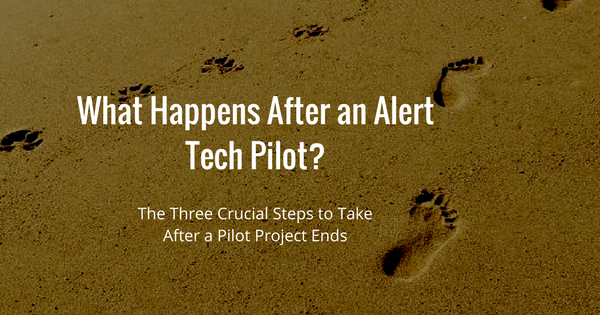The Three Crucial Steps to Take After a Pilot Project Ends
After a pilot project is complete, how do you evaluate success or failure. How do you know if your investment of time and money was worthwhile?
We will of course be analyzing much of the data along the way in order to adjust course, but after a pilot is complete we do a detailed analysis. Here are the crucial steps.
Step 1: Gather the Right Data
In order to determine whether the pilot project was a success, you need to have the right data. Here are some of the most important variables:
- Percentage of foot traffic that converted to fitting rooms;
- Fitting room wait times;
- Basket sizes;
- Per-store sales;
- Overall sales;
- Return rates;
- And any other data specific to your pilot.
In addition, you’ll want to look at how your staff behavior changed during the pilot. Was the technology well adopted? Did the staff make use of all the features? Could staff at some stores have adopted additional changes that would have improved results even further?
After the end of a pilot, Alert Tech will gather this data for you, help you analyze behavior change, and present you with a report card. With this information, we then conduct a full analysis.
Step 2: Perform Data Analysis
Armed with the numbers, we’re now equipped to compare your starting benchmarks with your end results, as well as with industry standards.
 First, it’s important to look at how much of a behavioral change the staff made throughout the pilot project. One of the main qualitative criteria for success is whether associates are providing a more positive customer experience. In stores where the staff did not make significant changes, we are likely to find a smaller change from the starting benchmarks.
First, it’s important to look at how much of a behavioral change the staff made throughout the pilot project. One of the main qualitative criteria for success is whether associates are providing a more positive customer experience. In stores where the staff did not make significant changes, we are likely to find a smaller change from the starting benchmarks.
Next, we analyze the numbers to quantify how successful the project was, or wasn’t. We can quantify behavior changes as well as changes in revenue. Overall conversion rates and sales figures will show you the big picture success of the pilot, whereas the detailed metrics provide other important information.
For instance:
- Did you see reduced return rates in stores that drove more traffic to fitting rooms? Obviously, there is a considerable benefit to even a small reduction in return rates.
- Was there an increase in foot traffic converting to the fitting rooms, but no increase in basket size? This would indicate an opportunity for associates to adjust their approach.
These are just a couple of examples of insights we may glean from the data analysis. We of course will address any other specific questions and goals that were set at the beginning of the pilot.
However, the main criteria for success is often the financial return. Were we able to demonstrate a significant enough lift in sales to provide an adequate ROI?
Step 3: Determine Next Steps
Ultimately, no two pilots are the same. Every store will have unique needs and unique results.
Using the analysis done in step two, we will help you determine what makes the most sense for your business as a whole. Did you see enough of an improvement to justify installing the technology on a wider scale, and if so, what timeline makes sense?
Summary
Armed with a detailed analysis of the pilot data, we’ll work with your team to:
1) determine how successful the pilot was, and 2) create a plan going forward.
